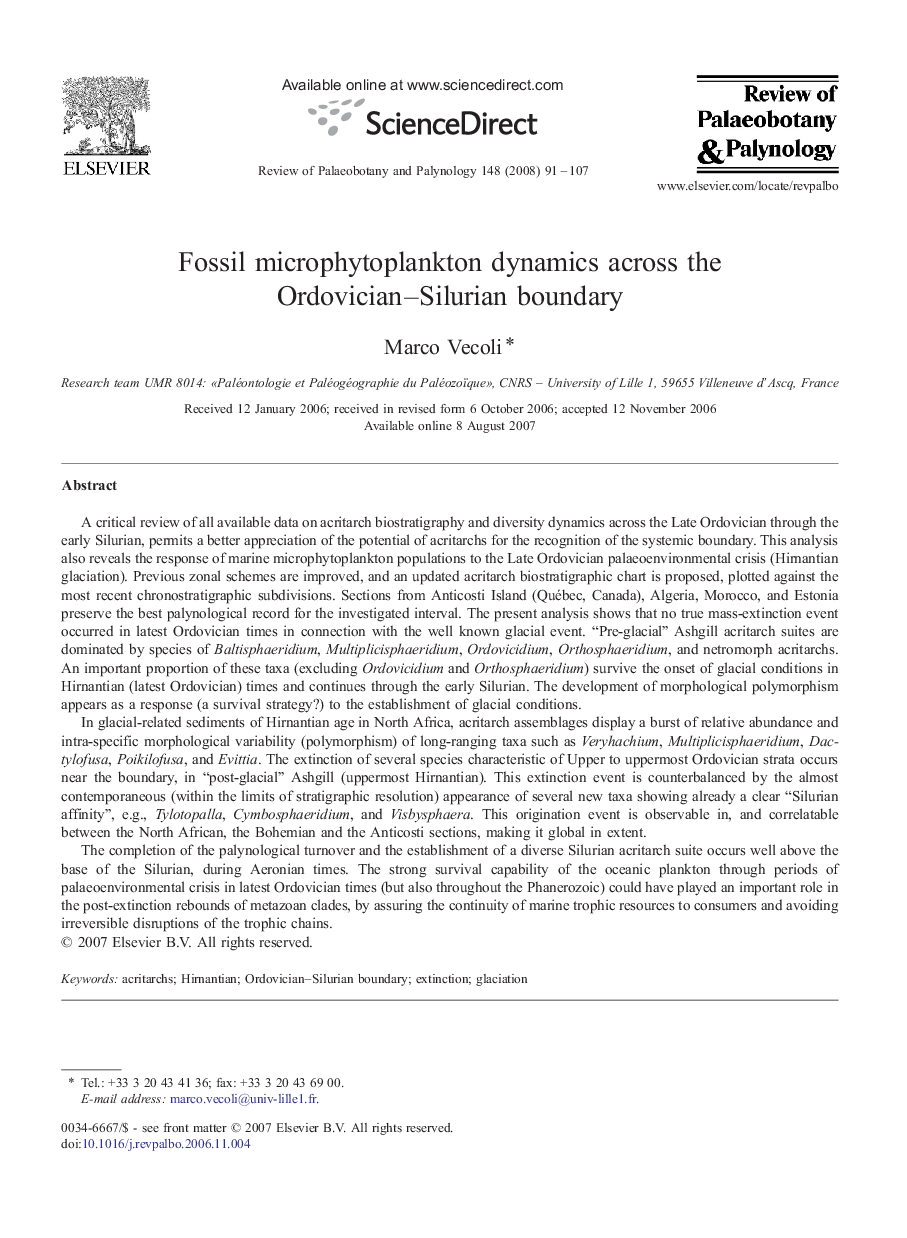| Article ID | Journal | Published Year | Pages | File Type |
|---|---|---|---|---|
| 4751048 | Review of Palaeobotany and Palynology | 2008 | 17 Pages |
A critical review of all available data on acritarch biostratigraphy and diversity dynamics across the Late Ordovician through the early Silurian, permits a better appreciation of the potential of acritarchs for the recognition of the systemic boundary. This analysis also reveals the response of marine microphytoplankton populations to the Late Ordovician palaeoenvironmental crisis (Hirnantian glaciation). Previous zonal schemes are improved, and an updated acritarch biostratigraphic chart is proposed, plotted against the most recent chronostratigraphic subdivisions. Sections from Anticosti Island (Québec, Canada), Algeria, Morocco, and Estonia preserve the best palynological record for the investigated interval. The present analysis shows that no true mass-extinction event occurred in latest Ordovician times in connection with the well known glacial event. “Pre-glacial” Ashgill acritarch suites are dominated by species of Baltisphaeridium, Multiplicisphaeridium, Ordovicidium, Orthosphaeridium, and netromorph acritarchs. An important proportion of these taxa (excluding Ordovicidium and Orthosphaeridium) survive the onset of glacial conditions in Hirnantian (latest Ordovician) times and continues through the early Silurian. The development of morphological polymorphism appears as a response (a survival strategy?) to the establishment of glacial conditions.In glacial-related sediments of Hirnantian age in North Africa, acritarch assemblages display a burst of relative abundance and intra-specific morphological variability (polymorphism) of long-ranging taxa such as Veryhachium, Multiplicisphaeridium, Dactylofusa, Poikilofusa, and Evittia. The extinction of several species characteristic of Upper to uppermost Ordovician strata occurs near the boundary, in “post-glacial” Ashgill (uppermost Hirnantian). This extinction event is counterbalanced by the almost contemporaneous (within the limits of stratigraphic resolution) appearance of several new taxa showing already a clear “Silurian affinity”, e.g., Tylotopalla, Cymbosphaeridium, and Visbysphaera. This origination event is observable in, and correlatable between the North African, the Bohemian and the Anticosti sections, making it global in extent.The completion of the palynological turnover and the establishment of a diverse Silurian acritarch suite occurs well above the base of the Silurian, during Aeronian times. The strong survival capability of the oceanic plankton through periods of palaeoenvironmental crisis in latest Ordovician times (but also throughout the Phanerozoic) could have played an important role in the post-extinction rebounds of metazoan clades, by assuring the continuity of marine trophic resources to consumers and avoiding irreversible disruptions of the trophic chains.
